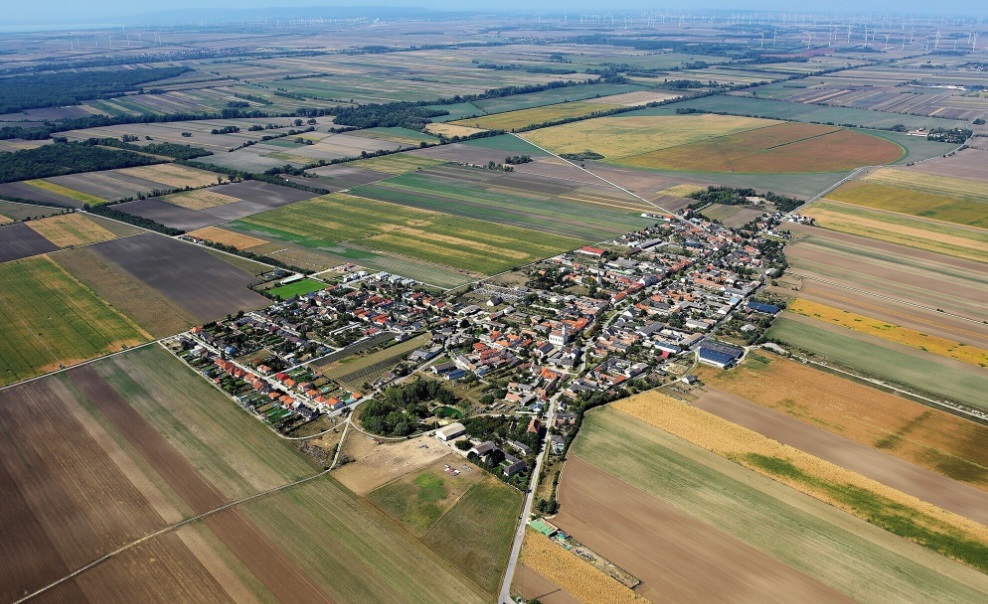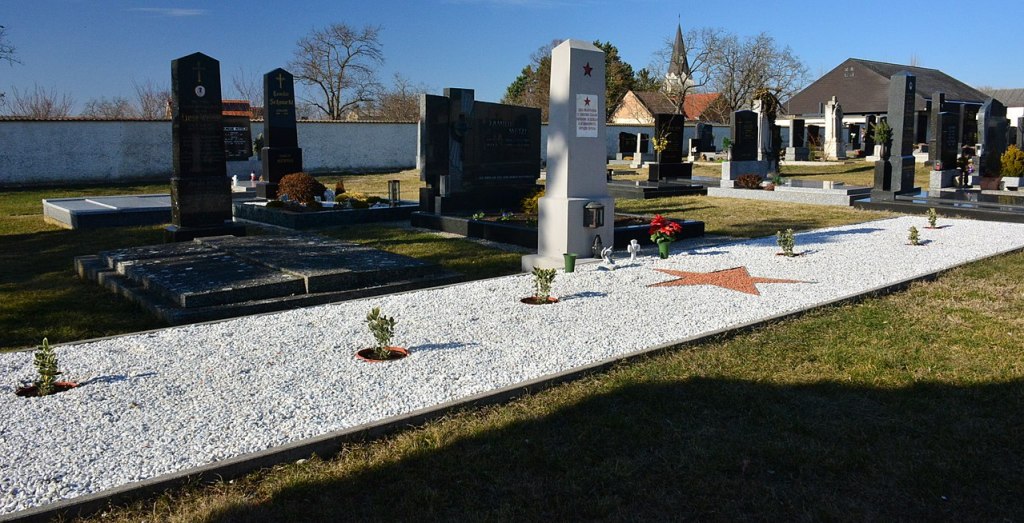The lost lands beyond Hungary’s borders as they existed prior to World War I are a world rendered in black and white. This is conspicuous in historic photographs. The lack of color creates a barrier. An invisible force field that keeps the viewer at a distance. The people and structures are less vivid. This makes them seem less than real. The same effect can be found in history books covering the period. The words are black, and the background is white. Stark, austere, and lacking in atmospherics. While reading I feel far removed from both time and place. The only cure I have found for this is travel which shrinks the distance. Paradoxically, it allows me to get closer to the past through the present. This is what I plan to do at my next destination, Deutsch Jahrndorf in eastern Austria. I want to see in living color the village that was in the eye of multiple historical hurricanes. Its German inhabitants managed to weather these storms intact.
Deutsch Jahrndorf is an outlier that occupies a unique place on the Austrian frontier and German world. The village is the easternmost municipality in Austria. Since the end of World War II, it has also been the eastern extent of ethnic Germans living together in a common place. All the other German communities that had existed further to the east – many of them since the Middle Ages – were destroyed during the war or the inhabitants expelled afterward. Deutsch Jahrndorf was lucky to survive, but it did not escape the war without harm. Evidence of the combat that occurred in and around the village can be found at its Soviet war cemetery. There is little doubt that unspeakable acts of depravity were committed against the populace by marauding soldiers. The Red Army was eager to avenge the atrocities that had been committed by Nazi Germany on the Eastern Front. Deutsch Jahrndorf could just as easily have become part of Czechoslovakia (now Slovakia) or Hungary. The border between Austria, Hungary, and Slovakia was set within spitting distance of the village. Deutsch Jahrndorf spent forty years in the Iron Curtain’s shadow. This was one of many ethnically related problems that had been ongoing since the late 20th century.

A small world – Aerial view of Deutsch Jahrndorf (Credit: Kathrin Santha)
Superficiality – A Magyar Makeover
The name looks odd to anyone other than an ethnic German. Deutsch Jarhndorf does nothing to endear me to the German language. It sounds like a provincial Teutonic delicacy. A mouthful of which would have to be washed down by copious amounts of guttural spirits. In any case, the village of 600 people has been called worse, such as its Hungarian derivation. In 1898, the Kingdom of Hungary’s Magyarization policy was in full effect. The idea was to make Transleithania’s non-Hungarians into Magyars (what Hungarians call themselves). An impossible task when it comes to language. Nonetheless, the official names of villages, towns, and cities were Magyarized. This took Deutsch Jarhndrof to a whole new level of linguistic absurdity.
Nemetjarfalu became the village’s name due to the Magyarization policy of the Hungarian government. This was one of many instances where superficial name changes occurred in the effort to make Hungarians a larger proportion of Transleithania’s population. From 1880 – 1910 they increased from 45% to 54%. Unfortunately, for Hungarian nationalists this did not alter the ethnic composition on the empire’s fringes. These areas would get taken away from Hungary by Trianon. In truth, a place like Deutsch Jarhndorf never really was Hungarian except from an administrative standpoint. The village was one of countless ethnic outliers. Non-Hungarian majority towns and villages could be found throughout Transleithania.

Memories of war – Soviet military cemetery in Deutsch Jahrndorf (Credit: Guenther)
Ways of Life – All Mixed Up
Trying to imagine what Deutsch Jarhndorf was like in the early 20th century is a fascinating thought experiment. I envision thrifty ethnic Germans working the land well enough to earn a living above the subsistence level. Their lives were wedded to traditions that had been passed down through the generations. Life was not easy, but with a strong work ethic and a bit of luck, they made it tolerable. The rate of change in Austria-Hungary was speeding up, but in villages it came more slowly, Technology was remaking rural life. Agriculture was becoming more efficient, and railroads could carry what was produced on the land to market quicker than in the past. The ethnic Germans of Deutsch Jahrndorf interacted daily with other ethnic groups in the nearby villages of Oroszvar (Rusovce) and Rajka. The region was a mix of Hungarians, Slovaks, Croats, and Jews.
The people identified by ethnicity and religion. What bound them together was that they were all citizens of the Austro-Hungarian empire for better or worse. Nationalism was causing conflicted feelings throughout the empire. Differences in ethnicity decided each group’s place in the economic pecking order. Nationalism threatened to upend the existing social order. The ethnic Germans in Deutsch Jahrndorf already lived in a German world that just so happened to be under the administration of Hungarians. Magyarization would have been an irritation to them, but not nearly as menacing as it must have been for Slovaks who had been under Hungarian rule for a thousand years. Each ethnic group was living in their own world, as well as a larger Hungarian administered part of the empire which infringed upon it on occasion. The Germans from Deutsch Jahrndorf were not insulated from Magyarization, but they were in a better position because ethnic Germans were still ultimately the empire’s most powerful ruling class and royalty. Deutsch Jahrndorf might have been in the Hungarian administered part of the empire, but Vienna and the Habsburgs were not far away.

Looking forward, looking back – Mother and daughter in Deutsch Jahrndorf 1933
Future Shock – Ignorance Is Bliss
In retrospect, the early 20th century in Deutsch Jahrndorf was a golden age compared to the series of catastrophes that were soon to come. It is hard to imagine what the people there would go through after 1914. The region had been visited by wars on many occasions, but those were mainly military affairs. The coming wars consumed civilians as much as soldiers. None of Deutsch Jahrndorf’s inhabitants had the slightest idea that history was about to have its way with them. Of course, they could not see the future. Their ignorance was bliss. I guess we could all say that.
Click here for: National Insecurity – Forgotten History: Bratislava’s Bridgehead (The Lost Lands #39)



